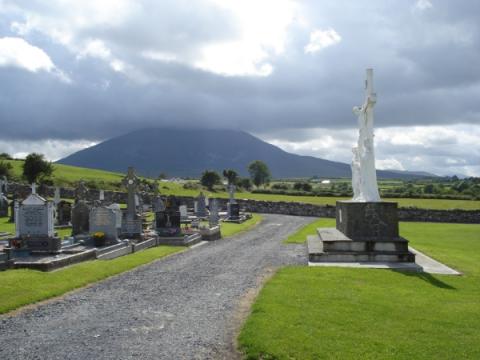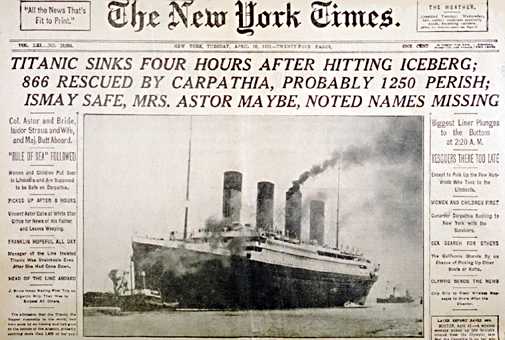Remembering the Addergoole 14

The Addergoole 14 should be commemorated not only in terms of the momentous loss which still haunts the tight knit community of Addergoole but also as a reminder of the harsh reality of emigration. By Justin Frewen.
For the first time in a decade and a half, the spectre of net emigration has raised its ugly head again, as 8000 more people left Ireland than arrived in the year up to April 2009. While nearly half of the 65,100 who parted were recent immigrants from Eastern Europe, the percentage of Irish nationals leaving is certain to increase given the current employment situation. Indeed, the Economic & Social Research Institute (ESRI) has forecast a net emigration of some 40,000 for the year ending April 2010.
All this a mere two years after Bertie Ahern's resignation speech, in which he congratulated himself on bequeathing a modern economy where unemployment and forced emigration would no longer be issues of concern.
(Picture: Mount Nephin, 2640 feet above sea level, dominates the parish of Addergoole.)
Last February 15th, the Tanaiste Mary Coughlan claimed that many new Irish emigrants were young people leaving to enjoy themselves. However, in a letter to the Irish Times, published four days after Coughlan's comments, Sarah Moore emphasised that leaving Ireland had been a severe wrench, as she left behind everything she held dear. On 23rd February, Tom Healy, now living in England, wrote how he had been obliged to emigrate nearly 50 years earlier in 1962 to avoid a life of poverty in Ireland.
A further 50 years before Tom left Dublin for England, 14 people from the parish of Addergoole in Mayo set sail for America. Known locally as the Addergoole 14, they hoped, like Tom and Sarah after them, to carve out a better life in a distant land. The Addergoole 14 came from a community that had been ravaged by hunger, death, disease and emigration since the Irish Famine.
An Irish wake was held in Castlebar to send the Addergoole 14 on their way. One can only wonder at the sadness that must have lain thick behind the merriment as those staying behind tried to cheer them on their way, while realising that emigration frequently meant they would never meet again.
As they lined up at the quay in Queenstown, Cobh the Titanic must have appeared a truly wondrous sight for the Mayo passengers, many of whom had never left their parish before. On 11 April 1912, 113 Irish passengers boarded, including the Addergoole 14, and took up their places in the third class decks (steerage).
Strolling the decks during the day, one can only imagine their dreams of a better life on the other side of the Atlantic. For 11 of the Addergoole 14, these dreams were dashed forever by the iceberg that ripped through the Titanic at 11:40pm on 14 April. Less than three hours later, at 2.20am, the Titanic sank.
Although told by the stewards they had struck something, it was only some 20 minutes before the Titanic finally sank that the stewards instructed them to go up on deck. However, they found the companionway leading to the upper decks blocked by the ship's officers. John Burke and Peter Canavan from Addergoole gathered the women and children and took them another way to the upper deck and the lifeboats.
Annie Kelly, one of the three Addergoole survivors, was led to an upper deck and pushed into a lifeboat by a friendly steward after she fell behind her friends. As Annie was in the lifeboat, she saw John Burke appear on deck with his wife Catherine and sister Mary. The stewards tried to push the two women into the boat after Annie but they refused to leave their husband and brother behind.
As Annie's lifeboat pulled out, only half full, she watched in despair as John, Catherine and Mary together with James Flynn, another one of the Addergoole 14, stood silently together in a row, hands clasped waiting for the end.
 Instead of the 32 lifeboats planned for the Titanic, only 20 had been installed to reduce clutter on the deck. Worse, despite having place for 1,178 people, 472 of the seats were left unoccupied. Over 1,500 passengers were left to their fate with most of them freezing to death in the icy seas.
Instead of the 32 lifeboats planned for the Titanic, only 20 had been installed to reduce clutter on the deck. Worse, despite having place for 1,178 people, 472 of the seats were left unoccupied. Over 1,500 passengers were left to their fate with most of them freezing to death in the icy seas.
Sixteen Mayo people in total boarded the Titanic. In addition to the Addergoole 14, two members of the crew hailed from Castlebar, though they were then living in Southampton. Two other Mayo women had a fortunate escape. One of them, Norah Callaghan, sailed the following day on another White Star liner, the SS Celtic, and arrived safely at her destination.
The loss of 11 lives from the small community of 3,496 living in Addergoole was a grievous one. At 0.3% of its population or 2% of the total complement of steerage passengers, the Addergoole Titanic Society believes it was the largest proportionate loss of life from any locality.
However, economic emigration continued as before. Just as it does today. The Addergoole 14 should be commemorated not only in terms of the momentous loss which still haunts the tight knit community of Addergoole but also as a reminder of the harsh reality of emigration. While many emigrants do build a better life abroad, few embark on such life-changing trips simply to enjoy themselves.
The Addergoole Titanic Society was formed in 2002 by a group of interested individuals living in the Lahardane area who were determined to commemorate the 14 emigrants who sailed on the Titanic. The Addergoole Titanic Society is currently planning a number of events for 2012 to commemorate the centenary of the ill-fated voyage of the Addergoole on the Titanic. For further information visit them here.
